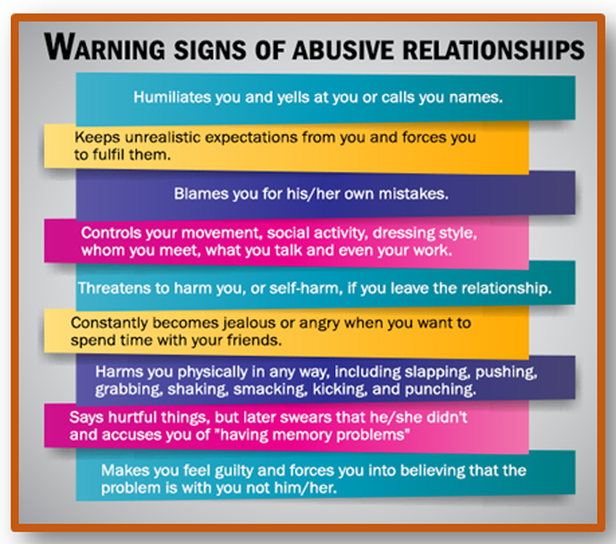Domestic violence is a devastating issue that affects individuals and families across the world. It can take many forms, from physical abuse to emotional manipulation, and it often goes unnoticed or unreported. Recognizing the signs and patterns of domestic violence is crucial for identifying and addressing the issue. In this article, we will discuss the different signs and patterns of domestic violence and provide guidance on how to recognize and address it.

What is Domestic Violence?
Domestic violence is a pattern of behavior used by one person to gain and maintain power and control over another person in an intimate relationship. It can occur in any type of relationship, including marriage, dating, and family relationships. Domestic violence can take many forms, including physical abuse, sexual abuse, emotional abuse, and financial abuse. It is important to note that domestic violence is not limited to physical violence and can also include other forms of abuse.
Physical Abuse
Physical abuse is the most visible form of domestic violence. It can include hitting, kicking, choking, pushing, and other forms of physical harm. Signs of physical abuse may include unexplained injuries, bruises, or marks, such as black eyes, broken bones, or welts. Victims may also make excuses for their injuries, such as saying they fell or had an accident.
Emotional Abuse
Emotional abuse can be just as damaging as physical abuse, but it is often harder to recognize. It can include name-calling, insults, threats, isolation, and manipulation. Signs of emotional abuse may include low self-esteem, anxiety, depression, and a sense of helplessness or hopelessness. Victims may also feel as though they are constantly walking on eggshells around their abuser.
Sexual Abuse
Sexual abuse is any unwanted sexual activity imposed on a person without their consent. It can include rape, sexual assault, and sexual harassment. Signs of sexual abuse may include unexplained sexually transmitted infections, pelvic pain, or difficulty walking or sitting. Victims may also show signs of emotional distress, such as anxiety, depression, and PTSD.
Financial Abuse
Financial abuse is when an abuser controls the victim’s finances or prevents them from earning a living. It can include stealing money, preventing access to bank accounts, and withholding funds. Signs of financial abuse may include the victim being unable to pay bills or having their credit ruined. Victims may also be unable to leave their abuser due to financial dependence.
Cycle of Violence
Domestic violence often follows a pattern known as the cycle of violence. This pattern includes three phases: the tension-building phase, the acute or violent phase, and the honeymoon or reconciliation phase.
During the tension-building phase, the abuser may become increasingly critical, irritable, and moody. The victim may feel like they are walking on eggshells, trying to avoid upsetting their abuser. This phase can last for days or even weeks.
The acute or violent phase is when the abuse occurs. It may involve physical, emotional, or sexual abuse. The victim may feel scared and helpless during this phase.
The honeymoon or reconciliation phase is when the abuser apologizes and promises to change. They may act loving and kind, trying to make up for their behavior. The victim may feel hopeful that the abuse will end and that the relationship will improve.

Pay Someone to Do My Homework for Me
However, the cycle of violence is not linear, and it may not follow this exact pattern. Some abusers may skip the tension-building phase and go straight to the acute phase, or they may stay in the honeymoon phase for longer periods of time.
Recognizing Domestic Violence
Recognizing domestic violence can be difficult, as victims may try to hide their injuries or downplay the abuse. However, there are some signs that you can look out for:
- Unexplained injuries or bruises
- Fear of their partner
- Low self-esteem
- Isolation from friends and family
- Changes in behavior, such as becoming withdrawn or depressed
- Constantly making excuses for their partner’s behavior
- Controlling or possessive behavior from the partner
- Being forced to do things against their will, such as sexual acts or illegal activities
- Having limited access to money, transportation, or communication devices
- Feeling like they are walking on eggshells around their partner
- Having a partner who monitors or controls their movements, such as checking their phone or emails without permission
If you suspect that someone you know is experiencing domestic violence, it is important to approach the situation with care and sensitivity. It is crucial to let them know that you believe them and that you are there to support them. Encourage them to seek help and provide them with resources, such as hotlines and support groups.
Addressing Domestic Violence
Addressing domestic violence is a complex issue that requires a multi-faceted approach. It is important to understand that leaving an abusive relationship is not always a simple option for victims, as abusers may use various tactics to maintain control and prevent them from leaving. However, there are some steps that victims can take to protect themselves:
- Create a safety plan: Victims can develop a safety plan to prepare for potential emergencies, such as having a safe place to go or a friend to call in case of danger.
- Seek support: Victims can seek support from friends, family, or support groups. Counseling or therapy can also be helpful in dealing with the emotional effects of abuse.
- Contact a domestic violence hotline: Hotlines provide support and resources for victims of domestic violence. They can provide information on legal options, shelters, and counseling services.
- Report the abuse: Victims can report the abuse to law enforcement, who can help protect them and hold their abuser accountable for their actions. It is important to remember that victims are not responsible for their abuser’s behavior and that they deserve to be safe and free from abuse.
Conclusion
Domestic violence is a serious issue that affects individuals and families across the world. It can take many forms, including physical abuse, emotional abuse, sexual abuse, and financial abuse. Recognizing the signs and patterns of domestic violence is crucial for identifying and addressing the issue. If you suspect that someone you know is experiencing domestic violence, it is important to approach the situation with care and sensitivity. Encourage them to seek help and provide them with resources. Addressing domestic violence is a complex issue, but with the right support and resources, victims can take steps to protect themselves and break free from the cycle of abuse.
- Study Guides, Notes, and Online Courses
- The University of Arizona Global Campus Assignments Help
- Warner University: Acceptance Rate, Rankings & Academic Support
- Warner University: Profile, Rankings and Data
- Public Health Planning Process and Evaluation
Find online help in writing essays, research papers, term papers, reports, movie reviews, annotated bibliographies, speeches/presentations, projects, presentations, dissertation services, theses, research proposals, essay editing, proofreading, Book reviews, article reviews, formatting, personal statements, admission essays, scholarship essays, application papers, among others.


 WRITE MY ESSAY NOW!
WRITE MY ESSAY NOW!